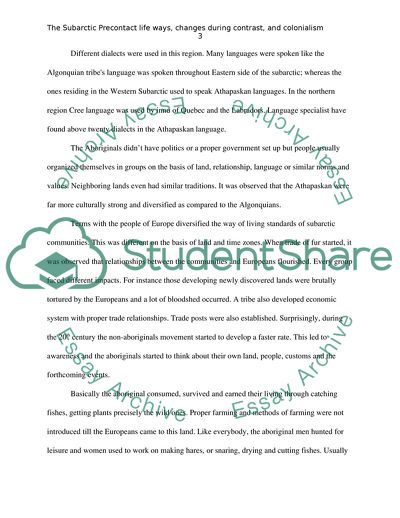Cite this document
(The Subarctic Precontact Life Ways, Changes during Contrast, and Term Paper, n.d.)
The Subarctic Precontact Life Ways, Changes during Contrast, and Term Paper. Retrieved from https://studentshare.org/history/1794376-the-subarctic-precontact-life-ways-changes-during-contrast-and-colonialism
The Subarctic Precontact Life Ways, Changes during Contrast, and Term Paper. Retrieved from https://studentshare.org/history/1794376-the-subarctic-precontact-life-ways-changes-during-contrast-and-colonialism
(The Subarctic Precontact Life Ways, Changes During Contrast, and Term Paper)
The Subarctic Precontact Life Ways, Changes During Contrast, and Term Paper. https://studentshare.org/history/1794376-the-subarctic-precontact-life-ways-changes-during-contrast-and-colonialism.
The Subarctic Precontact Life Ways, Changes During Contrast, and Term Paper. https://studentshare.org/history/1794376-the-subarctic-precontact-life-ways-changes-during-contrast-and-colonialism.
“The Subarctic Precontact Life Ways, Changes During Contrast, and Term Paper”. https://studentshare.org/history/1794376-the-subarctic-precontact-life-ways-changes-during-contrast-and-colonialism.


